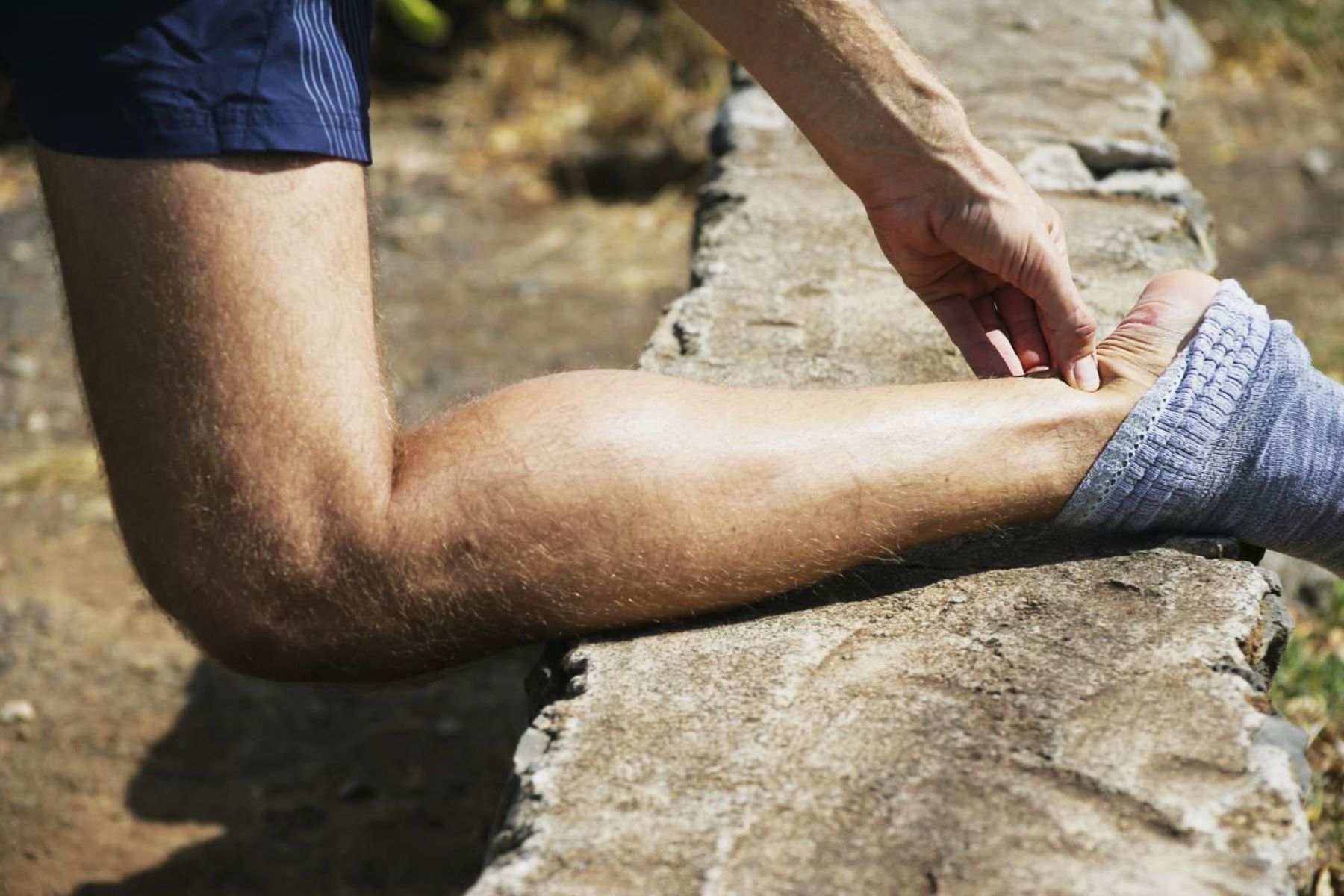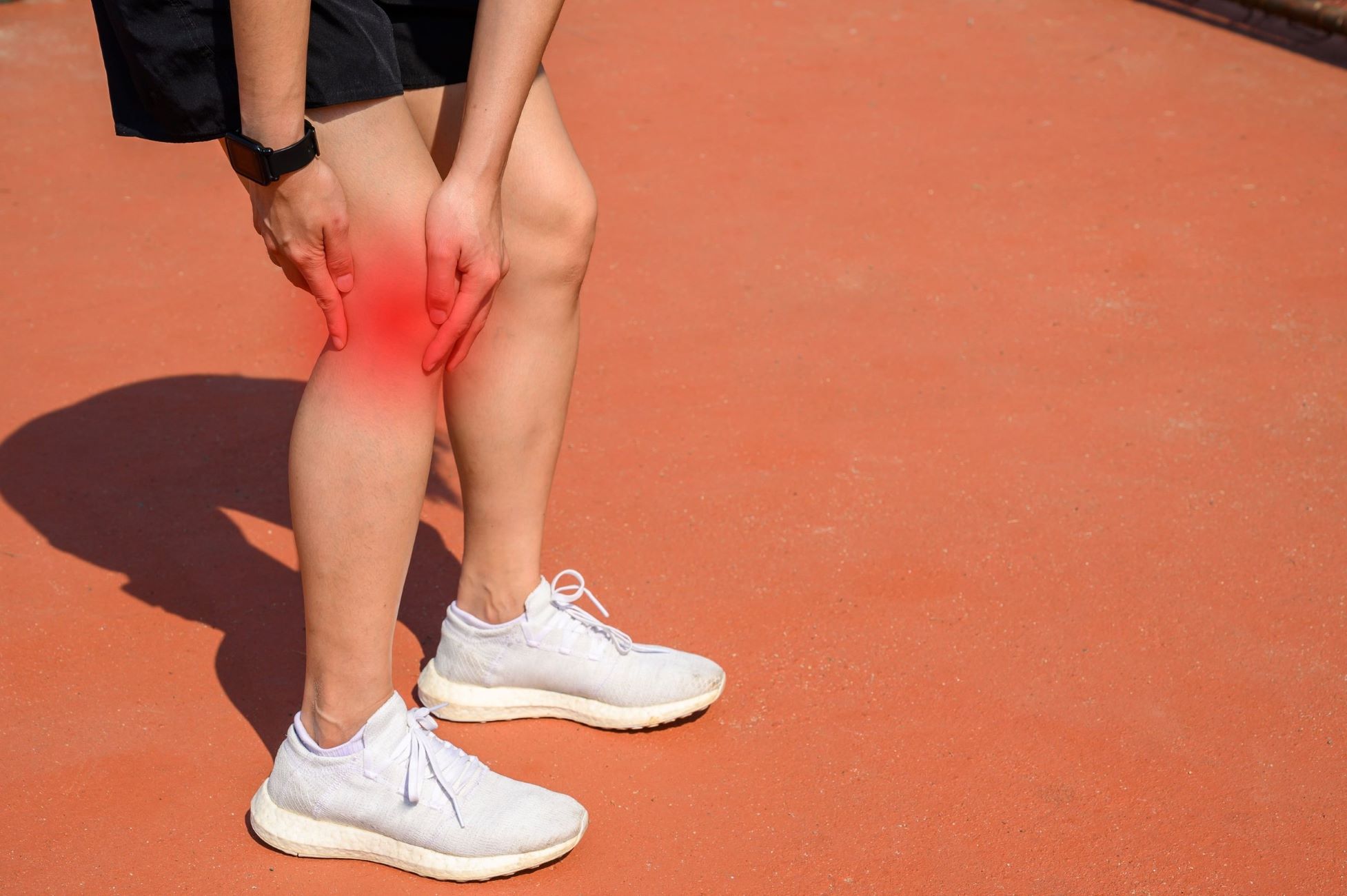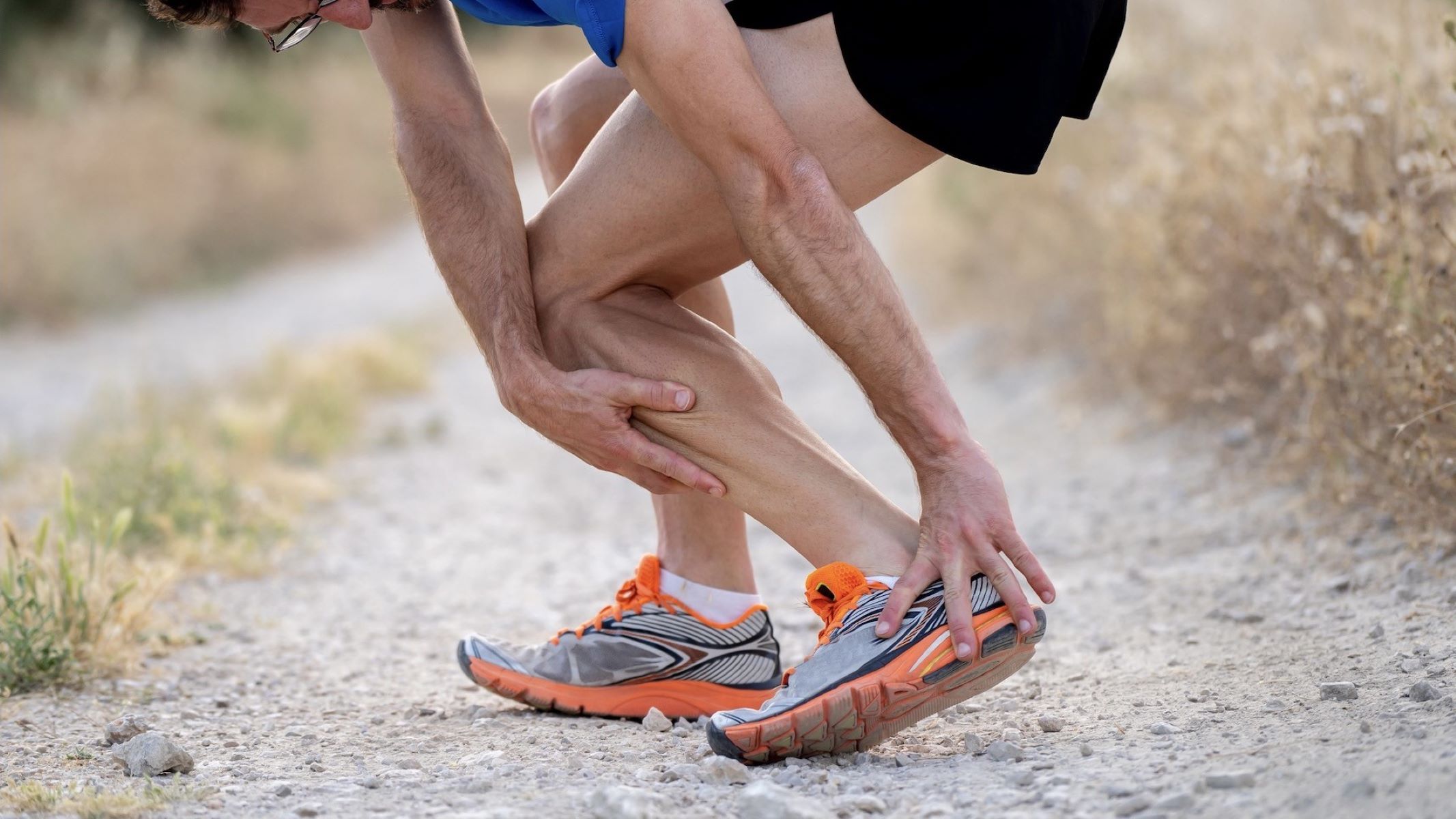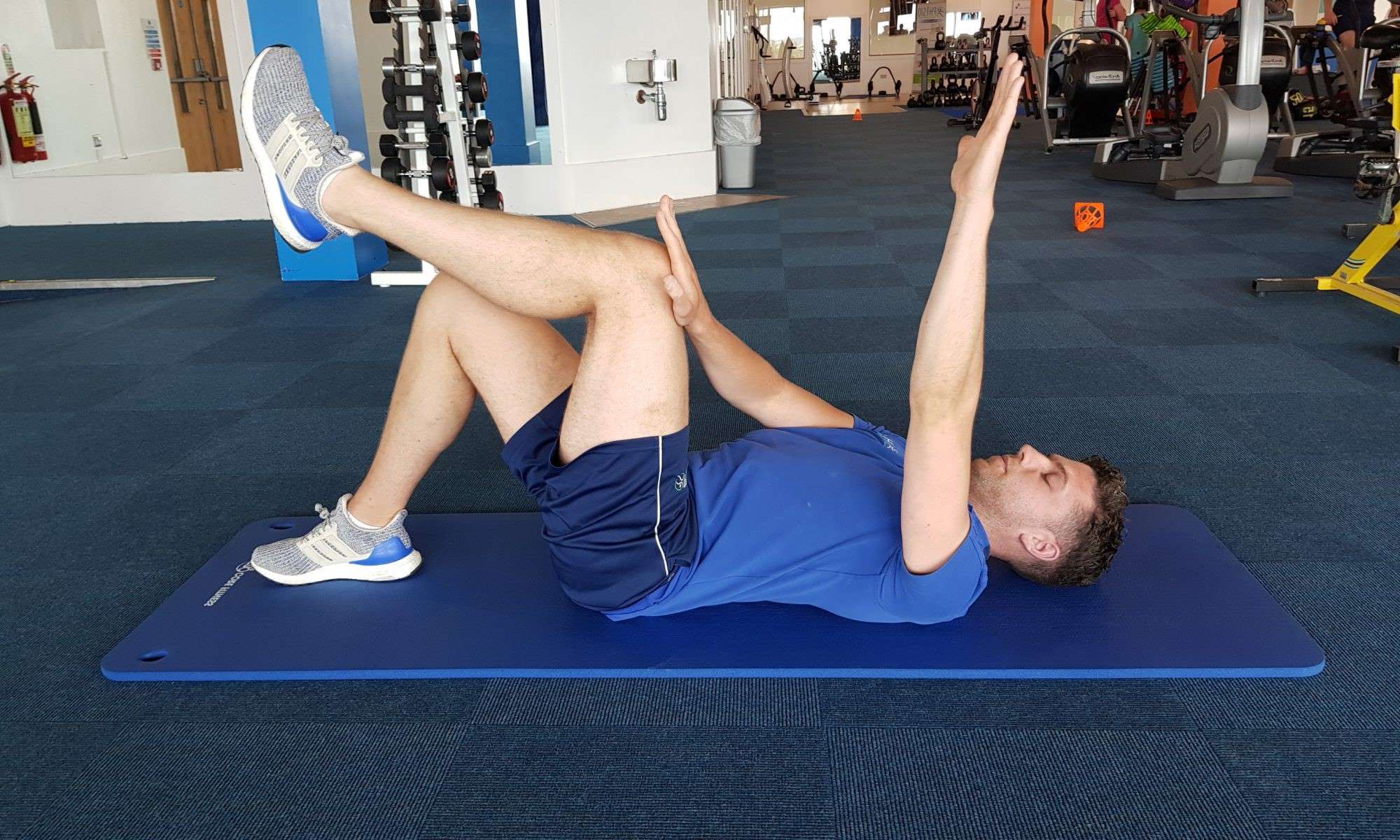Home>Health & Nutrition>Injury Prevention>All You Need To Know About Hip Flexor Strain


Injury Prevention
All You Need To Know About Hip Flexor Strain
Published: February 25, 2024
Learn how to prevent hip flexor strain and protect yourself from this common injury. Discover effective strategies for injury prevention and management.
(Many of the links in this article redirect to a specific reviewed product. Your purchase of these products through affiliate links helps to generate commission for Therunningadvisor.com, at no extra cost. Learn more)
Table of Contents
Understanding the Hip Flexor Muscles
The hip flexor muscles are a group of muscles located at the front of the hip and upper thigh. They play a crucial role in various movements, including walking, running, and bending at the waist. The primary hip flexor muscles include the iliopsoas, which consists of the psoas major and iliacus muscles, as well as the rectus femoris, sartorius, and tensor fasciae latae.
The iliopsoas, often referred to as the "mighty psoas," is a deep-seated core muscle that originates from the lower spine and pelvis, running down to the thigh bone. It is responsible for flexing the hip joint and plays a key role in maintaining proper posture. The rectus femoris, one of the quadriceps muscles, also functions as a hip flexor, aiding in activities such as kicking and lifting the knees.
The sartorius, the longest muscle in the human body, extends from the outer hip to the inner knee and assists in flexing, abducting, and rotating the hip. Additionally, the tensor fasciae latae, located on the outer hip, contributes to hip flexion and stabilization of the pelvis.
These muscles work in harmony to facilitate movements essential for daily activities and athletic performance. Whether it's climbing stairs, kicking a ball, or simply standing up, the hip flexor muscles are engaged in a wide range of motions.
Understanding the anatomy and function of the hip flexor muscles is crucial for recognizing the significance of maintaining their strength and flexibility. When these muscles are strained or injured, it can significantly impact mobility and overall physical well-being. Therefore, it is essential to be mindful of the factors that can lead to hip flexor strain and to adopt preventive measures to safeguard these vital muscles.
Read more: All You Need To Know About Hamstring Strains
Causes of Hip Flexor Strain
Hip flexor strain, also known as a hip flexor injury, occurs when the muscles that facilitate hip flexion are stretched beyond their limits or torn. This type of injury can be attributed to various factors, and understanding the causes is essential for both prevention and effective treatment.
-
Overuse or Repetitive Movements: Engaging in activities that involve repetitive hip flexion, such as running, cycling, or kicking, can lead to overuse of the hip flexor muscles. Continuous stress on these muscles without adequate rest and recovery can result in strain or micro-tears.
-
Sudden, Forceful Movements: Abrupt movements that forcefully extend the hip joint beyond its normal range of motion, such as during sprinting, jumping, or sudden changes in direction, can place excessive strain on the hip flexors. This can occur in sports activities or daily movements that involve quick and forceful actions.
-
Poor Flexibility and Muscle Imbalance: Limited flexibility in the hip flexor muscles, often due to prolonged sitting or inadequate stretching, can make them more susceptible to strain. Additionally, muscle imbalances between the hip flexors and opposing muscle groups, such as the glutes and hamstrings, can lead to increased stress on the hip flexors during movement.
-
Inadequate Warm-Up: Failing to properly warm up before engaging in physical activities can heighten the risk of hip flexor strain. Without adequate preparation, the muscles may not be sufficiently primed for the demands of the activity, making them more vulnerable to injury.
-
Previous Injury or Weakness: A history of hip flexor strain or weakness in the surrounding muscles can predispose an individual to recurrent injuries. Insufficient rehabilitation following a previous hip flexor injury can leave the muscles vulnerable to reinjury.
-
Age and Physical Condition: As individuals age, the flexibility and strength of the hip flexor muscles may diminish, increasing the likelihood of strain. Moreover, individuals who are relatively inactive or have weakened musculature may be more susceptible to hip flexor injuries.
-
Training Errors: Inadequate training techniques, such as improper form during exercises or sudden increases in training intensity or volume, can contribute to hip flexor strain. It is essential to gradually progress training regimens to allow the muscles to adapt and strengthen effectively.
By recognizing these potential causes of hip flexor strain, individuals can take proactive measures to minimize the risk of injury. Implementing proper warm-up routines, maintaining flexibility, and incorporating targeted strengthening exercises can help safeguard the hip flexor muscles and promote overall musculoskeletal health. Additionally, seeking guidance from a healthcare professional or a certified trainer can provide valuable insights into injury prevention strategies tailored to individual needs.
Symptoms and Diagnosis
Identifying the symptoms of a hip flexor strain is crucial for prompt diagnosis and effective management of the injury. Individuals experiencing a hip flexor strain may encounter a range of symptoms that can significantly impact their daily activities and physical performance.
Symptoms of Hip Flexor Strain
-
Pain and Discomfort: One of the primary indicators of a hip flexor strain is pain in the front of the hip or upper thigh. This discomfort may range from a dull ache to sharp, localized pain, particularly during movements that engage the hip flexor muscles, such as walking, climbing stairs, or lifting the knee.
-
Limited Range of Motion: A noticeable reduction in the ability to flex the hip or lift the knee may be observed in individuals with a hip flexor strain. This limitation in range of motion can impede activities that require full hip flexion, leading to stiffness and difficulty in performing everyday tasks.
-
Muscle Weakness: Weakness in the hip flexor muscles, accompanied by a feeling of instability or inability to bear weight on the affected leg, is a common symptom of a hip flexor strain. This weakness may be particularly evident when attempting to engage in activities that involve hip flexion, such as running or kicking.
-
Swelling and Tenderness: Inflammation and tenderness in the front of the hip or upper thigh region may manifest following a hip flexor injury. Swelling and localized tenderness to the touch can indicate tissue damage and the body's inflammatory response to the strain.
-
Discomfort When Sitting or Standing: Individuals with a hip flexor strain may experience discomfort when transitioning between sitting and standing positions. The act of rising from a seated position or maintaining a standing posture may exacerbate the pain and stiffness associated with the injury.
Diagnosis of Hip Flexor Strain
Diagnosing a hip flexor strain typically involves a comprehensive assessment by a healthcare professional, such as a physician or physical therapist. The diagnostic process may encompass the following components:
-
Medical History: The healthcare provider will inquire about the individual's medical history, including any previous injuries, activities that may have contributed to the current strain, and the onset and progression of symptoms.
-
Physical Examination: A thorough physical examination will be conducted to evaluate the range of motion, strength, and tenderness in the hip flexor muscles. Specific tests, such as the Thomas test or the resisted hip flexion test, may be performed to assess the severity of the injury.
-
Imaging Studies: In some cases, imaging studies such as ultrasound, MRI, or X-rays may be recommended to visualize the extent of the injury and rule out other potential causes of hip pain.
Upon establishing a diagnosis, the healthcare provider can develop a tailored treatment plan to address the hip flexor strain, alleviate symptoms, and facilitate the individual's recovery. Early recognition of the symptoms and prompt medical evaluation are essential for implementing appropriate interventions and preventing the exacerbation of the injury.
Read more: All You Need To Know About Strava Summit
Treatment Options for Hip Flexor Strain
Upon diagnosis of a hip flexor strain, implementing appropriate treatment strategies is paramount to promote healing, alleviate discomfort, and restore optimal function of the affected muscles. The management of hip flexor strain typically involves a multifaceted approach aimed at addressing pain, inflammation, and muscle recovery. The following treatment options are commonly employed to effectively manage hip flexor strains:
Rest and Activity Modification
Resting the affected hip flexor muscles is crucial in the initial phase of injury management. Engaging in activities that exacerbate pain or strain the muscles should be avoided to prevent further damage. Modification of daily activities, such as reducing prolonged sitting and minimizing activities that require extensive hip flexion, can help alleviate stress on the injured muscles and facilitate the healing process.
Ice Therapy
The application of ice packs to the injured area can help reduce pain, swelling, and inflammation associated with a hip flexor strain. Cold therapy, typically applied for 15-20 minutes several times a day, can constrict blood vessels and limit the inflammatory response, providing relief and promoting tissue recovery.
Compression and Elevation
Utilizing compression bandages or wraps around the affected hip can help minimize swelling and provide support to the injured muscles. Elevating the leg when possible can also aid in reducing swelling and improving circulation, contributing to the overall management of the injury.
Non-Steroidal Anti-Inflammatory Drugs (NSAIDs)
Over-the-counter NSAIDs, such as ibuprofen or naproxen, may be recommended to alleviate pain and reduce inflammation associated with a hip flexor strain. These medications can help manage discomfort and facilitate mobility during the recovery period. However, it is essential to use NSAIDs as directed and consult a healthcare professional for personalized recommendations.
Physical Therapy and Rehabilitation
Engaging in targeted physical therapy exercises and rehabilitation programs is instrumental in restoring strength, flexibility, and function to the hip flexor muscles. Physical therapists can design customized exercise regimens to gradually reintroduce movement, improve muscle endurance, and enhance overall hip stability. Additionally, manual therapy techniques, such as soft tissue mobilization and stretching, may be employed to aid in the healing process.
Progressive Strengthening Exercises
As the hip flexor strain progresses through the healing phase, incorporating progressive strengthening exercises is essential to rebuild muscle strength and endurance. These exercises may include hip flexor stretches, leg raises, and controlled resistance training to gradually recondition the muscles and promote functional recovery.
Modalities and Therapeutic Interventions
Modalities such as ultrasound therapy, electrical stimulation, and heat therapy may be utilized in conjunction with rehabilitation exercises to enhance tissue healing, reduce muscle tension, and improve overall recovery outcomes. These therapeutic interventions can complement the comprehensive management of hip flexor strains under the guidance of healthcare professionals.
Gradual Return to Activity
Upon significant improvement in symptoms and functional capacity, a gradual return to regular activities and sports participation can be initiated. It is essential to follow a structured progression, gradually increasing the intensity and duration of activities while monitoring the response of the hip flexor muscles to prevent reinjury.
By integrating these treatment options and adhering to individualized rehabilitation plans, individuals can effectively address hip flexor strains, expedite recovery, and minimize the risk of recurrent injuries. Seeking guidance from healthcare professionals, such as physicians, physical therapists, or sports medicine specialists, can provide valuable support in navigating the treatment process and optimizing the outcomes of hip flexor strain management.
Rehabilitation and Prevention Strategies
Rehabilitation and prevention strategies play a pivotal role in the comprehensive management of hip flexor strains, encompassing targeted interventions to facilitate recovery and minimize the likelihood of future injuries. The integration of structured rehabilitation protocols and proactive preventive measures is essential for optimizing musculoskeletal health and promoting long-term well-being.
Rehabilitation Protocols
Effective rehabilitation following a hip flexor strain involves a progressive and tailored approach to restore strength, flexibility, and functional capacity. Physical therapy plays a central role in guiding individuals through the rehabilitation process, focusing on the following key components:
Range of Motion Exercises
Engaging in gentle and controlled range of motion exercises is fundamental in the early stages of rehabilitation. These exercises aim to alleviate stiffness, improve flexibility, and promote optimal joint mobility in the hip flexor muscles.
Strengthening Regimens
Gradually reintroducing targeted strengthening exercises is critical for rebuilding the strength and endurance of the hip flexor muscles. Progressive resistance training, incorporating exercises such as hip flexor stretches, leg raises, and resistance band workouts, aids in enhancing muscle function and promoting stability.
Flexibility and Stretching Techniques
Incorporating specific stretching techniques, such as dynamic and static stretching for the hip flexors, contributes to maintaining optimal muscle length and flexibility. Stretching exercises help prevent muscle tightness and reduce the risk of recurrent strain.
Functional Movement Training
Integrating functional movement training into rehabilitation programs enables individuals to regain the ability to perform daily activities and sports-specific movements with improved biomechanics and coordination. Functional exercises tailored to individual needs facilitate a seamless transition back to regular activities.
Manual Therapy and Modalities
Utilizing manual therapy techniques, including soft tissue mobilization and myofascial release, can aid in addressing muscle imbalances, reducing muscle tension, and enhancing tissue healing. Additionally, modalities such as ultrasound therapy and electrical stimulation may complement rehabilitation efforts to optimize recovery outcomes.
Prevention Strategies
Incorporating proactive strategies to prevent hip flexor strains is paramount for maintaining musculoskeletal health and minimizing the risk of injury. The following preventive measures can significantly contribute to safeguarding the hip flexor muscles and promoting overall physical well-being:
Comprehensive Warm-Up Routines
Prior to engaging in physical activities or sports, implementing thorough warm-up routines that include dynamic stretching, mobility exercises, and gradual activation of the hip flexor muscles is essential. Adequate preparation primes the muscles for the demands of activity, reducing the risk of strain.
Cross-Training and Balanced Conditioning
Diversifying training regimens through cross-training and incorporating balanced conditioning exercises that target the hip flexors, as well as opposing muscle groups, promotes overall musculoskeletal balance and reduces the likelihood of overuse injuries.
Proper Technique and Form
Emphasizing proper technique and form during physical activities, sports, and resistance training is crucial for minimizing excessive stress on the hip flexor muscles. Focusing on biomechanically sound movements and posture reduces the risk of strain and supports optimal muscle function.
Gradual Progression and Recovery
Implementing gradual progression in training intensity, volume, and duration allows the hip flexor muscles to adapt and strengthen effectively, reducing the likelihood of overexertion and subsequent injury. Additionally, prioritizing adequate recovery periods between training sessions is essential for muscle repair and adaptation.
Flexibility and Mobility Maintenance
Incorporating regular flexibility and mobility exercises, including targeted hip flexor stretches and yoga practices, supports the maintenance of optimal muscle length and joint mobility. Enhanced flexibility reduces the susceptibility to strain and enhances overall movement quality.
Professional Guidance and Monitoring
Seeking guidance from certified trainers, physical therapists, or healthcare professionals can provide valuable insights into personalized injury prevention strategies. Regular monitoring of training techniques, movement patterns, and muscle imbalances supports proactive intervention and risk mitigation.
By integrating these rehabilitation and prevention strategies into daily routines and training regimens, individuals can effectively manage hip flexor strains, promote optimal muscle function, and reduce the likelihood of future injuries. Prioritizing musculoskeletal health through proactive measures and structured rehabilitation fosters resilience and supports sustained physical performance and well-being.













